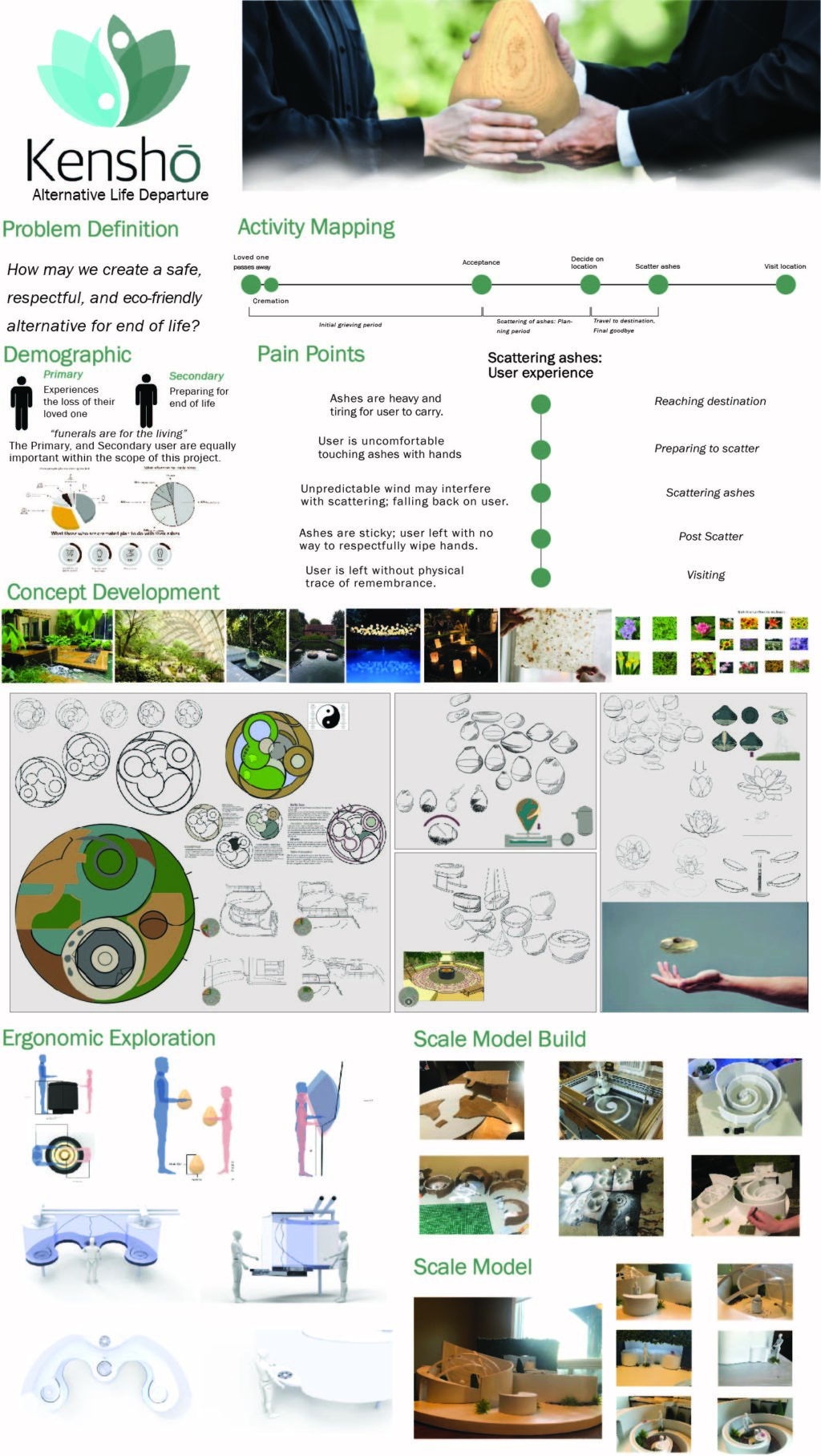ACIDO Rocket Finalist
Kensho: Alternative Life Departure
An average of 55 million people die annually, presently, this number is substantially increasing due to COVID-19. End-of-life is often dealt with in one of two ways in Western Society: burial or cremation; the prior having the most severe environmental implications. These processes have been traced back to 1400BC and AD 200, however, as technology advances, and the population exponentially increases these methods become glaringly archaic. The implications of burial include: habitable land lost to cemeteries, extract of raw materials used for caskets in excess, and toxic fluids (such as formaldehyde) leak from the human remains to find underground waterways. This presents an increased danger of ingestion to communities and wildlife located within close proximity to cemeteries. Keeping in mind cemeteries, are currently growing in size encompassing a larger landmass than ever before, as the need for grave plots grow. Beyond the urgent environmental, and social responsibility that’s in need of being confronted, there is a secondary challenge of creating a place of remembrance and mourning for those left to grieve the loss. Is it possible to create an end-of-life experience that is both environmentally sustainable, and emotionally gratifying?
About the Designer
 Sinead Summerfield, Humber College
Sinead Summerfield, Humber College
Sinead is a passionate problem finder and a firm believer that at the crux of design is an ill-defined problem space. With enough understanding, this space can branch into the creation of functional human-centered solutions.

